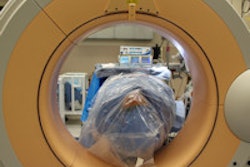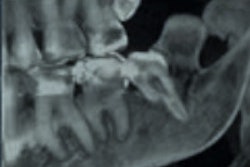CHICAGO - In 1985, it took 2,800 forensic specialists more than three months to identify the remains of the 520 victims in Japan's worst commercial air disaster, the crash of Japan Airlines Flight 123. If an experimental computer-aided dental x-ray system had been available then, the identification process could have been accomplished in about nine days, according to researchers from Japan.
That's the potential of the automated dental x-ray system developed by researchers at Kanagawa Dental College in Yokosuka and Tohoku University in Sendai, said Dr. Eiko Kosuge, D.D.S., a lecturer in the department of oral and maxillofacial radiology at Kanagawa Dental College.
In a presentation at the 2007 RSNA meeting, Kosuge explained how the Phase-Only Correlation system can match a postmortem x-ray with an antemortem x-ray in about 3.6 seconds -- much the way automated fingerprint detection can match prints for identification.
When faced with a mass human disaster, such as the Japan Airlines plane crash in which just four people survived, Kosuge said the experimental system -- which should be ready for prime time in another year -- works in this way:
- The computer compares the victim's x-rays with antemortem dental records of persons believed to be victims.
- The system then matches the antemortem and postmortem x-rays.
- The computer calculates a matching score based on the degree of matching between images.
- The computer makes a list of the top-ranking candidates for human investigators to review.
- The result provided by the computer is checked by a forensics expert who makes the final matching decision.
"One key feature of our system is that in the event of a change to the structure of the teeth -- for example, the addition or loss of a crown or tooth -- our system still produces matches," Kosuge said.
To make the identification, the system requires that two or three teeth be attached to the jawbone, according to Koichi Ito, Ph.D., co-author of the report and assistant professor at the Graduate School of Information Sciences at Tohoku University. The system cannot be used with a single tooth.
The researchers said that the system could also identify badly injured or noncommunicative survivors as long as preaccident x-rays exist.
By Edward Susman
AuntMinnie.com contributing writer
November 28, 2007
Related Reading
Panoramic x-rays prove suitable for dental age calculation, October 12, 2005
Copyright © 2007 AuntMinnie.com



















